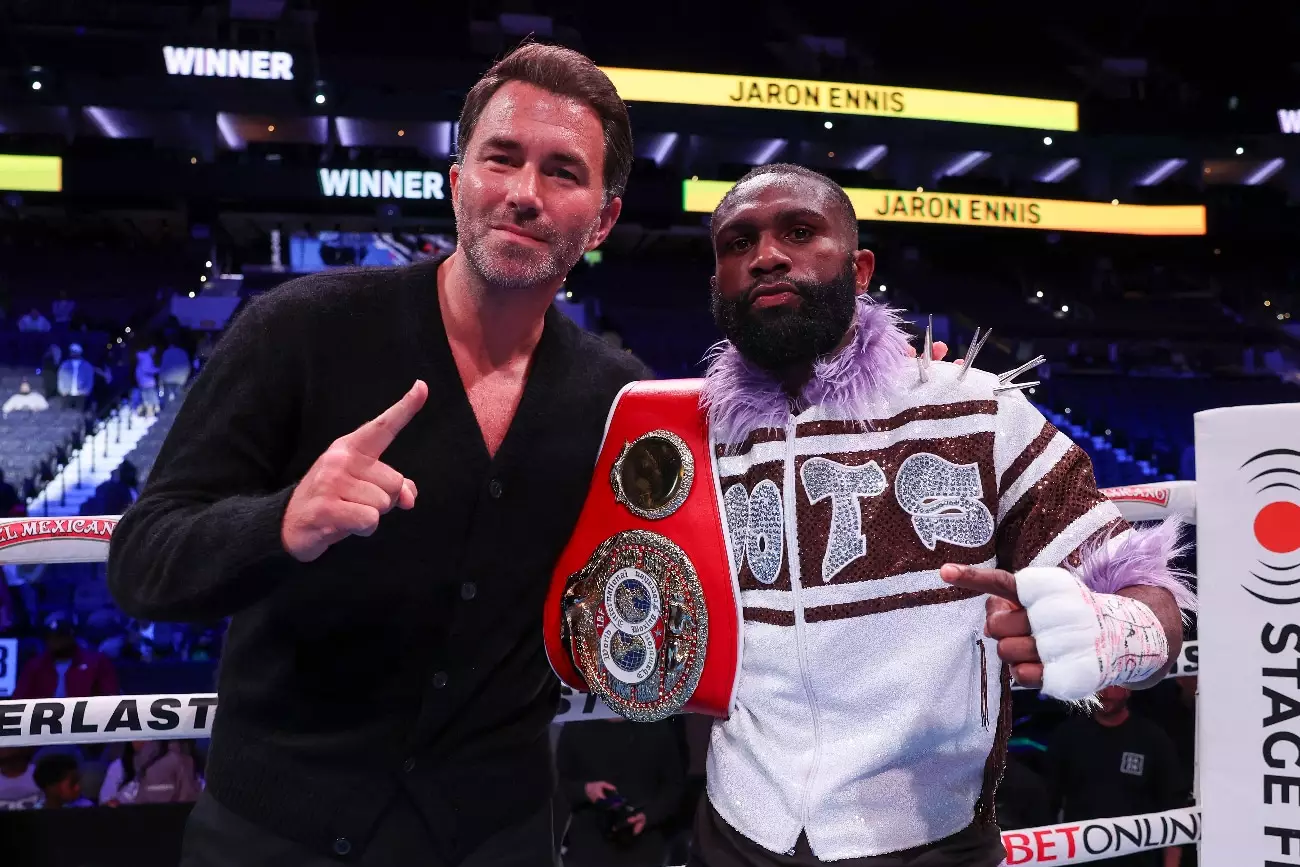The boxing world is abuzz with discussions surrounding Jaron “Boots” Ennis, a rising welterweight star with an impressive record of 33 wins (29 by knockout) and zero losses. Promoter Eddie Hearn has been vocal about the strategic moves surrounding Ennis, particularly focusing on his potential unification fights within the welterweight division and the implications of a possible move up to junior middleweight. Given the complexities of the sport’s landscape, where negotiations often dictate outcomes more than athletic talent does, the future of Ennis remains a compelling topic of debate.
Hearn has emphasized DAZN’s substantial financial commitment to Ennis, indicating that there is a pressing ambition to orchestrate unification bouts at welterweight. However, he warns that time is not on their side. According to Hearn, the window for Ennis to unify the division is rapidly closing, necessitating immediate action. The welterweight class, while historically rich in talent, appears stagnant at the top with champions largely disengaged from competitive bouts that excite fans. Hearn’s concern stems from a waning urgency among the champions, citing difficulties in securing lucrative fights that would make financial sense for all parties involved.
The hesitance among top welterweights like Mario Barrios, Eimantas Stanionis, and Brian Norman Jr. to face Ennis raises questions about whether the division is truly open to unification or merely resistant to the rising talent that poses a risk to their own titles. Hearn’s frustration is palpable as he tries to navigate these murky waters, revealing how boxing’s political dynamics often overshadow the sport itself.
The talk of moving Ennis up to 154 pounds introduces a critical juncture in his career. While Hearn appears hesitant to support this transition, citing previous matchups that lacked the desired excitement, fans are divided. Many believe that fighting fighters like Vergil Ortiz Jr., who holds the WBC interim title, could present a new dimension in Ennis’s career. The bout scheduled for February 22 in Riyadh would attract significant interest, positioning the winner as a potential contender for other high-stakes matchups in the division.
However, the question arises: is moving up truly the best path for Ennis? On one hand, the allure of facing young, formidable champions at junior middleweight like Ortiz, Terence Crawford, and others could inject vibrant energy into Ennis’s career. On the other hand, Hearn’s hesitance to abandon welterweight aspirations signals that a shift in weight could also mean relinquishing the unified title dreams that fans and the fighter himself hold dear.
Underlying these developments is the significant obstacle of negotiations, a common hurdle in boxing that can render an otherwise competitive landscape stagnant. Hearn’s clear stance on not overpaying for fights speaks volumes about the changing dynamics of boxing economics. In an industry that often sees fighters jumping at the prospect of financial security, the reluctance of champions to engage with Ennis for reasonable purses raises concerns about the sustainability of his career trajectory within the welterweight class.
If available champions remain evasive, Hearn may have little choice but to pivot, especially if Durant’s unyielding quest for unification continues to meet with resistance. Boxing is a sport that relies heavily on visibility; fighters like Ennis must stay relevant. Yet, the longer it takes to secure meaningful fights, the more difficult it becomes for him to maintain his audience’s interest, not to mention his standing in an ever-evolving sport.
As Eddie Hearn grapples with these dynamics, the future of Jaron Ennis becomes a reflection of larger challenges within boxing—a game fraught with politics, financial implications, and the eternal quest for legacy. Ennis’s need for action is evident, whether that means continuing to chase unified titles at welterweight or courageously stepping into the competitive fray of junior middleweight. As the decision looms, the ultimate question remains: who will hold the reins to the future of one of boxing’s most promising talents?
In the end, Ennis’s career trajectory will hinge not only on his ability inside the ring but also on the strategic decisions made outside it.


Leave a Reply